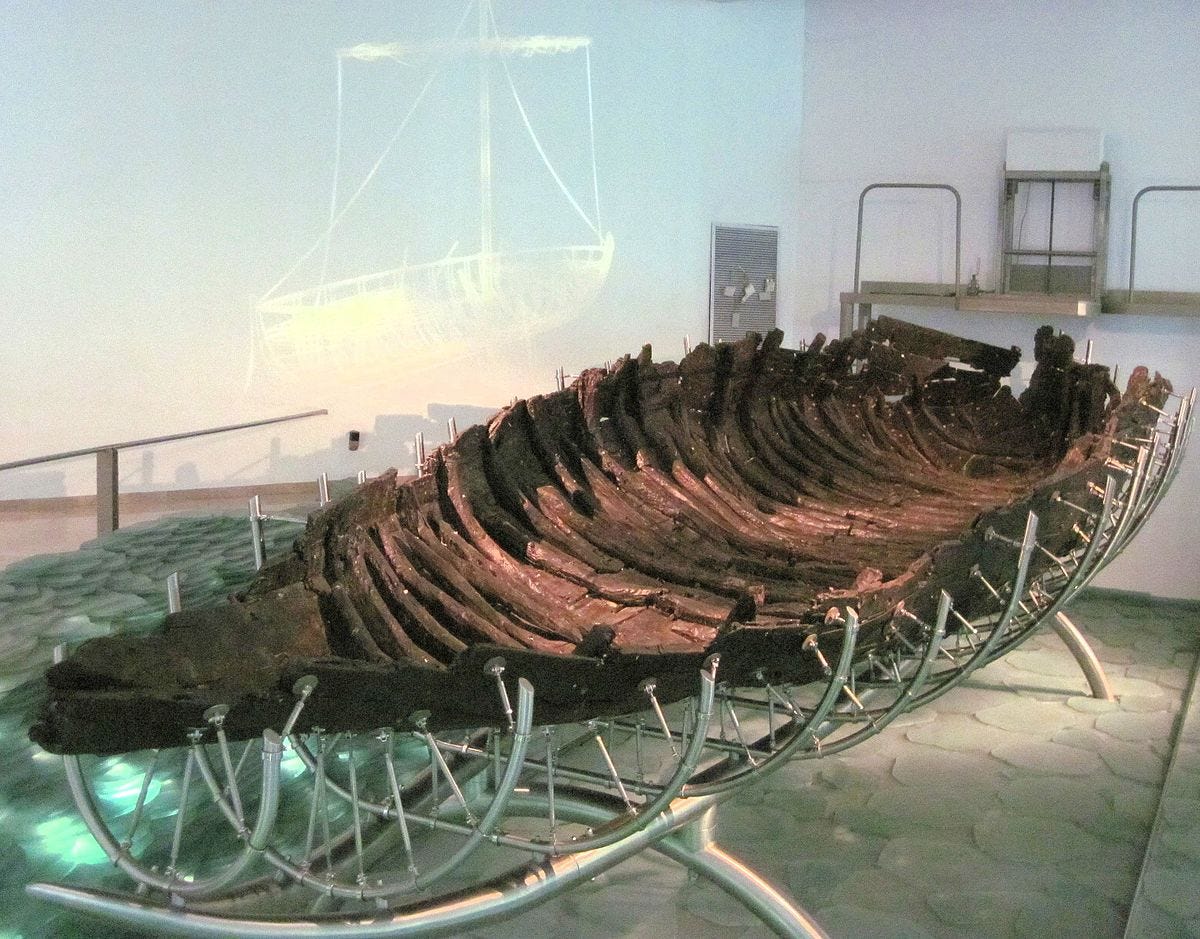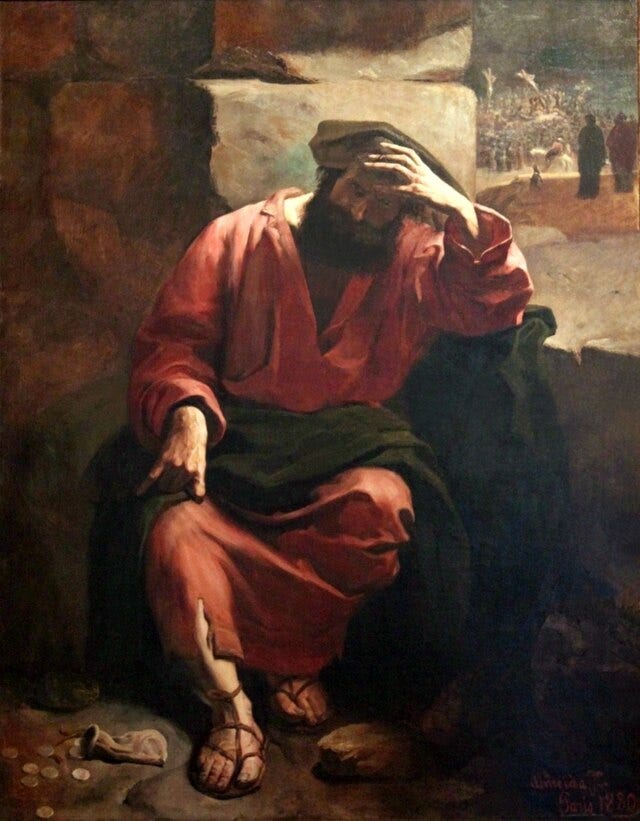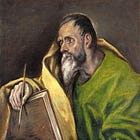Hidden GEMS In The Gospels: Undesigned Coincidences
Internal evidence for the Gospels being based on eyewitness accounts

Find us on Medium.com
Or X
Or Insta:
instagram.com/streettheologianapologetics/
Life-changing material
The widespread impact of the Gospels on history cannot be understated. Many sceptics of Christianity through the ages have appreciated the beauty of the Sermon on the Mount. Even in Islam, the people of the Gospel (Christians) are told to judge by what Allah has revealed in the Gospel (Surah 5:47).
Yet, the Gospels present a deeper reality that is often missed. We are all fallen sinners in need of Jesus’ grace. Our hearts are wellsprings of evil (Matt. 15:19-20). Jesus did not come for the self-righteous, but for sick and fallen sinners (Luke 5:31-32).
Jesus came to seek and save the lost (Luke 19:10). To give His life as a ransom for many (Matt. 20:28). Jesus came to give His life so that we could be restored to God.
It’s not about moral superiority or trying to climb the impossible ladder to God, but rather God coming down to us and meeting us in our brokenness. Paving a way forward for us we could never pave ourselves.
Yet, the internal evidence in the Gospels does not suggest this narrative is mere fiction. Rather, a beautiful, life-changing narrative rooted in history.
Undesigned Coincidences
Undesigned coincidences are like when a glove fits a hand perfectly, even though the person making the glove didn’t mean to make it for the person it fits.
Two independent sources subtly help explain details from one another in a seamless fashion. Details overlap too much for the underlying story to be fictitious but the stories are different enough that the similarities don’t seem forced.
It’s the sort of evidence you would expect to see when two sources are based on eyewitness accounts. One account of an event omits a piece of information which is filled in by another account in a seemingly unintentional fashion.
Undesigned coincidences support the notion that the Gospel authors utilised multiple different independent sources that were based on eyewitness accounts.
Elsewhere, we cover multiple other demonstrations of the Gospels being based on eyewitness accounts.
EXAMPLE
For example, Sarah says she saw Bob walking to the shopping centre in a suit on a Saturday morning. Taylor, who works in the shopping centre, tells you she interviewed Bob for a sales job on Saturday morning.
The distinct details each witness gives subtly help explain why Bob was wearing a suit and why he went to the shopping centre. The more instances of these coincidences we have, the less likely intentional fabrication becomes.
WHOSE IDEA?
William Paley (1743-1805), did some initial work on undesigned coincidences. John James Blunt (1794-1855) coined the term and added to Paley’s work.
In addition, Lydia McGrew, in Hidden in Plain View, outlines nine occasions the Synoptic Gospels explain John, on six occasions John explains the Synoptics while there are four instances where the Synoptics explain each other (p. 62, 92, 97). Lydia’s husband, Tim McGrew has also done some work on undesigned coincidences.
TWO BROTHERS
In Mark 3:17, Jesus nicknamed James and John “sons of thunder”, yet it is Luke who explains to us why they had this nickname with the brothers asking Jesus to send fire down from heaven to consume a village of the Samaritans (Luke 9:51-55).
MENDING NETS
James and John were mending their nets (Matt. 4:21) when Jesus called them to follow him. Luke explains Jesus’ miracle catch of fish was breaking their nets (Luke 5:6) before they left everything to follow Jesus (v. 10-11), yet Matthew does not mention this miraculous catch.
GREEN GRASS AND FESTIVALS
Regarding the feeding of the five thousand, Mark says there was “green grass” (Mark 6:39) while John says there was “much grass” (John 6:10). Mark says there were many “coming and going” (Mark 6:31) while John mentions it was the Passover in passing without reference to the green grass or many people coming and going (John 6:4; John only mentions crowds following Jesus v.2).
The Passover likely took place in March or April, which would be after the five most significant months of precipitation near Bethsaida. Hence, John explains both the green grass and large crowds in Mark. Moreover, Palestine was not a place known for green grass at most times of the year!
JOSEPHUS AND JOHN THE BAPTIST
Jewish historian Josephus in Antiquities 18.116-19 refers to “the verdict of the Jews.. that the destruction visited on Herod’s army was a vindication of John (the Baptist), since God saw fit to inflict such a blow on Herod.” Yet, Josephus does nothing to explain why the Jews thought this. The Gospels tell us, however, that John the Baptist publicly opposed Herod’s marriage (Matthew 14:4; Mark 6:18; Luke 3:19) and this led to John being arrested.
INSIDE HEROD’S PALACE
Matthew 14:1-2 mentions Herod said to his servants, Jesus is John the Baptist raised from the dead. How would Matthew know what Herod was talking about in his palace?
Luke unintentionally gives us a possible answer in an unrelated passage by mentioning Joanna, the wife of Chuza, Herod’s household manager, was one of Jesus’ followers (Luke 8:3). This could explain how it was possible for Christians to access inside information on Herod.
HEALING AT NIGHT
In Matthew 8:14-15, Jesus heals Peter’s mother-in-law. The next verse (v. 16) explains many were brought to Jesus to be healed later on in the evening. Why wait until evening?
Mark records the same event but mentions that Jesus went to Peter/ Simon’s house on the Sabbath (Mark 1:29) and the crowds waited until Sabbath evening (a traditional Jew would have waited until sundown when Sabbath ended) to bring sick and oppressed people to Jesus (v. 32).
TELL NO ONE
Luke 9:36 records the disciples told no one regarding the transfiguration in those days (until a later point in time). Why? Mark records Jesus told them to tell no one until the Son of Man had risen (Mark 9:9).
TWO SISTERS
In Luke 10:39, Mary sits at Jesus’ feet to listen to his teaching while in John 11:32, she falls at Jesus’ feet. Martha, meanwhile, is more concerned about the stench from Lazarus being dead for four days (John 11:39) and is anxious about many practical concerns (Luke 10:41).
Both Luke and John, in separate stories, present Mary as being at Jesus’ feet while Martha is more active and has practical concerns.
PHILIP AND THE BAKERS
In John 6:5, Jesus asks Philip where to buy bread. John does not explain why Jesus asked Philip. Why not ask Judas who held the money (John 12:6)? Luke 9:10 tells us the feeding of the five thousand took place at Bethsaida.
Interestingly, later on in John we find Philip was from Bethsaida (John 12:21). Yet, John mentions nowhere that the feeding of the five thousand happens in Bethsaida! We need Luke’s help to know that!
BETHSAIDA AND A MIGHTY WORK
Moreover, Matthew refers to a mighty work done in Bethsaida in a woe Jesus is giving (Matt. 11:21). Yet, Matthew records no miracles taking place in Bethsaida up until this point. Only from Luke do we find out the feeding of the five thousand took place (Luke 9:10-17) before the woe on Bethsaida is given (Luke 10:13).
DESTROYING AND REBUILDING A TEMPLE
Mark 15:29 records several people mocking Jesus, who said he would destroy the temple and rebuild it in three days. Yet, nowhere do the Synoptic Gospels ever mention Jesus saying this.
Only John 2 helps us understand where this claim came from when we read Jesus exclaimed he will raise up the temple three days after destroying it as a metaphorical reference to his body (John 2:18-21).
JESUS AND PILATE
In Luke 23:3 Jesus admits to the charge he is King of the Jews, yet Pilate says he is not guilty (v. 4). How is this possible? Something is either wrong or missing. Helpfully, John explains the context with Jesus mentioning his kingdom is not of this world (John 18:36) which would not have been a direct threat to Caesar’s kingdom. John doesn’t give us the accusation from the Jews which would justify why Pilate would even ask this question, yet Luke provides this information (Luke 23:2).
LATER FABRICATIONS OR HISTORY
Writing up fiction is an act of making up facts to suit your needs. How could later fabricators from all different parts of the world, decades after Jesus, tie each other’s loose ends up so neatly in such a subtle fashion if the recorded narratives were completely disconnected from the historical events?
The Gospels, when examined closely, reveal a remarkable consistency and authenticity through undesigned coincidences, pointing to their roots in eyewitness testimony rather than fictional creation.
These subtle details strengthen the case for their historical reliability, offering a compelling invitation to explore their life-changing message further.
We’re only scratching the surface, more to come.




















